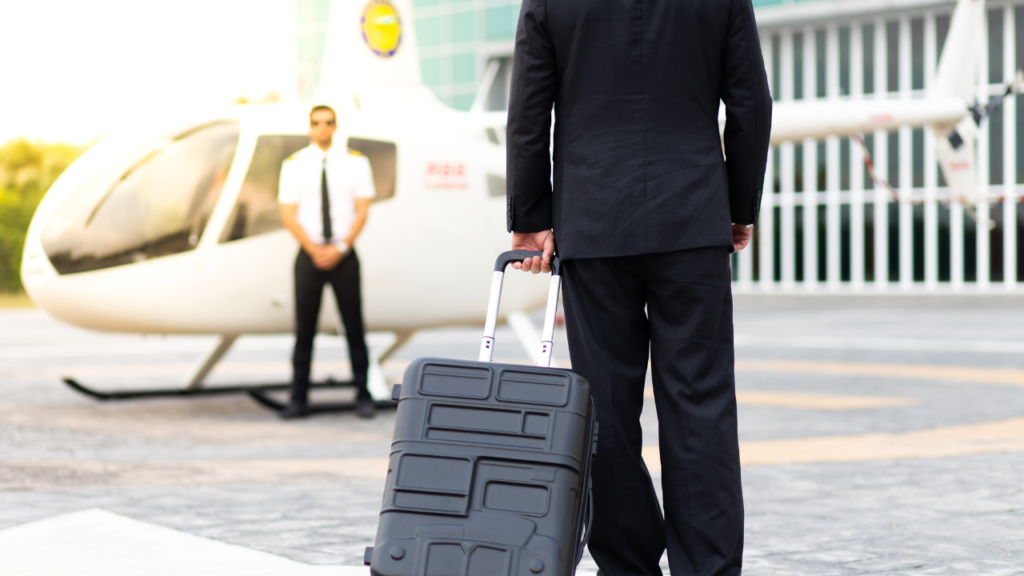Securing the Skies: Best Practices for Corporate Aircraft Cybersecurity

In an era where digital systems are integral to aviation, corporate aircraft cybersecurity has become a critical concern for executive protection specialists and aviation security professionals. As corporate jets become increasingly connected, they also become more vulnerable to cyber threats. This blog post explores the evolving landscape of corporate aircraft cybersecurity, highlighting best practices to safeguard these high-value assets and their VIP passengers from digital threats.
The Growing Threat Landscape:
Corporate aircraft are no longer just mechanical marvels; they’re flying data centers. From flight management systems to passenger Wi-Fi, these aircraft are packed with technology that, while enhancing efficiency and comfort, also creates potential entry points for cybercriminals. Recent studies have shown a 300% increase in cyberattacks targeting aviation systems over the past five years, with corporate aircraft being particularly attractive targets due to their high-profile passengers and potentially sensitive onboard data.
Key Vulnerabilities in Corporate Aircraft:
1. Avionics Systems: Modern aircraft rely heavily on digital avionics, which can be susceptible to hacking if not properly secured.
2. Communication Systems: Satellite communications and in-flight Wi-Fi networks can be exploited if not robustly protected.
3. Ground Systems: The interfaces between aircraft and ground-based systems (like maintenance networks) present potential vulnerabilities.
4. Electronic Flight Bags (EFBs): These tablet-based systems used by pilots can be targets for malware if not properly managed.
5. Passenger Devices: Personal devices brought onboard by passengers can inadvertently introduce vulnerabilities to the aircraft’s network.
Best Practices for Corporate Aircraft Cybersecurity:
1. Implement Robust Access Controls:
– Use multi-factor authentication for all critical systems.
– Regularly update and audit user access privileges.
– Implement strict password policies and change default credentials.
2. Secure Communication Channels:
– Encrypt all data transmissions to and from the aircraft.
– Use Virtual Private Networks (VPNs) for ground-to-air communications.
– Regularly update and patch communication systems.
3. Network Segmentation:
– Separate critical avionics networks from passenger entertainment systems.
– Use firewalls and intrusion detection systems to monitor network traffic.
– Implement air-gapping for the most sensitive systems where possible.
4. Regular Security Assessments:
– Conduct periodic vulnerability assessments and penetration testing.
– Perform security audits of all onboard and ground-based systems.
– Stay informed about the latest threats and vulnerabilities in aviation cybersecurity.
5. Employee Training and Awareness:
– Provide comprehensive cybersecurity training for all crew members.
– Develop and enforce strict policies on device usage and data handling.
– Create a culture of cybersecurity awareness among all staff.
6. Secure Software Management:
– Implement a robust patch management system for all onboard software.
– Use whitelisting to prevent unauthorized software installation.
– Regularly update and secure Electronic Flight Bags.
7. Incident Response Planning:
– Develop and regularly test an incident response plan specific to cyber threats.
– Establish clear communication protocols for reporting and managing cyber incidents.
– Conduct simulations to prepare for various cyber attack scenarios.
8. Supply Chain Security:
– Vet all third-party vendors and suppliers for cybersecurity compliance.
– Implement secure processes for software and hardware updates.
– Conduct regular audits of supplier security practices.
Case Study: Mitigating a Potential Cyber Threat
In 2022, a corporate jet operator detected unusual network activity during a routine security scan. Quick action by their cybersecurity team revealed an attempted breach of the aircraft’s communication systems. By implementing their incident response plan and leveraging network segmentation, they successfully isolated the threat before any damage occurred. This incident led to an industry-wide review of communication system vulnerabilities.
Emerging Technologies in Corporate Aircraft Cybersecurity:
1. Artificial Intelligence and Machine Learning:
– Implementing AI-driven threat detection systems that can identify and respond to anomalies in real-time.
– Using machine learning algorithms to predict and prevent potential cyber attacks.
2. Blockchain Technology:
– Exploring blockchain for secure, tamper-proof logging of maintenance records and flight data.
– Implementing blockchain-based identity verification for enhanced access control.
3. Quantum Encryption:
– Researching quantum key distribution for ultra-secure communication channels.
– Preparing for the post-quantum cryptography era to protect against future quantum computing threats.
Regulatory Landscape and Compliance:
The corporate aircraft cybersecurity landscape is also shaped by evolving regulations. Key considerations include:
– Compliance with the FAA’s cybersecurity guidelines for aircraft systems.
– Adherence to GDPR and other data protection regulations, especially for international flights.
– Implementation of NIST cybersecurity framework principles in aviation contexts.
Training and Skill Development:
To effectively implement these best practices, continuous training and skill development are crucial. Our Corporate Aircraft Security Course offers a comprehensive module on cybersecurity, covering:
– Latest threats and vulnerabilities specific to corporate aircraft
– Hands-on training with cybersecurity tools and technologies
– Incident response and crisis management in cyber attack scenarios
– Legal and regulatory compliance in aviation cybersecurity
This training equips security professionals with the knowledge and skills needed to protect corporate aircraft from evolving cyber threats.
Corporate aircraft cybersecurity is a complex and ever-evolving field that demands constant vigilance and expertise. By implementing these best practices and staying ahead of emerging threats, security professionals can ensure the safety and integrity of corporate flights in the digital age.
Are you ready to enhance your skills in corporate aircraft cybersecurity? Enroll in our Corporate Aircraft Security Course today and gain the expertise needed to protect high-value aviation assets from cyber threats. Visit to learn more and register. Don’t let cyber vulnerabilities compromise your aircraft’s security – equip yourself with the latest knowledge and techniques in corporate aircraft cybersecurity!


